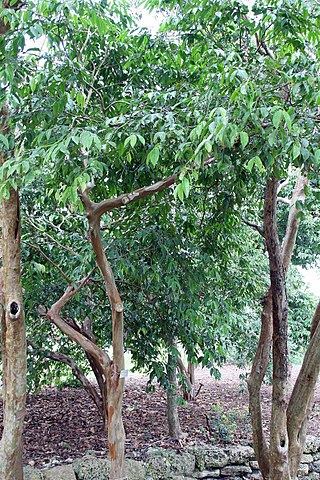
Snakes are elongated, limbless, carnivorous reptiles of the suborder Serpentes. Like all other squamates, snakes are ectothermic, amniote vertebrates covered in overlapping scales. Many species of snakes have skulls with several more joints than their lizard ancestors, enabling them to swallow prey much larger than their heads. To accommodate their narrow bodies, snakes' paired organs appear one in front of the other instead of side by side, and most have only one functional lung. Some species retain a pelvic girdle with a pair of vestigial claws on either side of the cloaca. Lizards have independently evolved elongate bodies without limbs or with greatly reduced limbs at least twenty-five times via convergent evolution, leading to many lineages of legless lizards. These resemble snakes, but several common groups of legless lizards have eyelids and external ears, which snakes lack, although this rule is not universal.

Colubridae is a family of snakes. With 249 genera, it is the largest snake family. The earliest species of the family date back to the Oligocene epoch. Colubrid snakes are found on every continent except Antarctica.

The Colubrinae are a subfamily of the family Colubridae of snakes. It includes numerous genera, and although taxonomic sources often disagree on the exact number, The Reptile Database lists 717 species in 92 genera as of September 2019. It is the second largest subfamily of colubrids, after Dipsadinae. Many of the most commonly known snakes are members of this subfamily, including rat snakes, king snakes, milk snakes, vine snakes, and indigo snakes.

Vexatorella is a genus containing four species of flowering plant, commonly known as vexators, in the family Proteaceae. The genus is endemic to the Cape Floristic Region of South Africa. The name means “little trouble-maker”, given with reference to the initial difficulties of placing V. latebrosa within the family. All species are shrubs which occur in dry fynbos habitats on the fringes of the Succulent Karoo ecoregion. The inflorescences are similar to those of the related leucospermums but also share features of the leucadendrons, with the floral bracts becoming woody and enlarged following pollination. The flowers are insect-pollinated, with the seeds dispersed by ants (myrmecochory).
Abacetus vexator is a species of ground beetle in the subfamily Pterostichinae. It was described by Peringuey in 1904.
Johann Gustav Fischer was a German herpetologist.
Diliolophus vexator is a species of beetle in the family Cerambycidae, and the only species in the genus Diliolophus. It was described by Henry Walter Bates in 1885.

Toxicodryas blandingii, commonly known as Blanding's cat snake and Blanding's tree snake, is a species of rear-fanged venomous snake of the family Colubridae. The species is endemic to Sub-Saharan Africa.

Toxicodryas pulverulenta, commonly known as Fischer's cat snake, Fischer's tree snake, and the powdered tree snake, is a species of rear-fanged venomous snake in the family Colubridae. The species is native to Sub-Saharan Africa.

Toxicodryas is a genus of rear-fanged venomous snakes in the family Colubridae.
Nupserha vexator is a species of beetle in the family Cerambycidae. It was described by Francis Polkinghorne Pascoe in 1858. It is known from Sri Lanka.

Vexatorella alpina, the Kamiesberg vexator, is an evergreen, upright shrub of up to about 1½ m high, in the family Proteaceae. It has entire, long inverted egg-shaped, bluish grey, leathery leaves of 3–4½ cm (1.2–1.8 in) long and 5–13 mm (0.2–0.5 in) wide on a distinct stalk, and globular flower heads of about 2 cm (0.8 in) across at the tip of the branches, and consisting of pale pink flowers with extended, thick-tipped styles. The plants are flowering from September to November. It is an endemic species that is restricted to the Kamiesberge in South Africa.

Vexatorella amoena, also known as the Swartruggens vexator is an evergreen shrub of up to about 1 m (3 ft) high, that is assigned to the family Proteaceae. It has entire, inverted egg-shaped, bluish grey, leathery leaves of 1½–3 cm (0.6–1.2 in) long and 5–11 mm (0.20–0.45 in) wide on a distinct stalk, and globular flower heads of about 2 cm (0.8 in) across with pale pink flowers with extended, thick-tipped styles at the tip of the branches. The plants are flowering from September to November. It is an endemic species that is restricted to the Western Cape province of South Africa.

Vexatorella obtusata is an evergreen shrub, with narrow, leathery leaves and about 2 cm big, globular flowerheads consisting of well scented, creamy pink flowers, from which a long style with a thickened tip extends. Two subspecies are distinguished, both restricted to different parts of the Western Cape province of South Africa. The creeping V. obtusata subsp. obtusata, also known as the Montagu vexator flowers from September to December, and the upright V. obtusata subsp. albomontana, also known as the Witteberg vexator, that has flowers between August and November.

Vexatorella latebrosa, also known as the Robertson vexator, is an evergreen, upright shrub of up to about 1½ m high, from the family Proteaceae. It has entire, long inverted egg-shaped, bluish grey, leathery leaves that are line-shaped to very narrowly spade-shaped in outline, 5–6½ cm (2.0–2.6 in) long and 2–3 mm (0.08–0.12 in), and mostly solitary globular flower heads at the end of the branches of 2½–3 cm (0.8 in) across with scented, pink to carmine flowers with extended, styles with a thickened tip. The plants are flowering from August to September. It is an endemic species that is restricted to the Western Cape province of South Africa.

The Vexator Canadiensis tokens are thought to be politically satirical tokens produced in either Quebec City or Montreal sometime in the 1830s. The tokens present a very crude image of a vaguely male bust on their obverse, and a female figure on the reverse. The legends on either side were deliberately designed so that they are hard to definitively read, but are commonly known as the "vexators" based on a common interpretation of its obverse legend. Depending on the interpretation of the inscriptions, they can either be taken as a form of satirical protest against either an unpopular Upper Canada governor, or William IV as a "tormentor of Canada", or more simply, depicting a fur trapper. Since all of these interpretations are possible, the ambiguity would allow the issuer from escaping being cited for sedition.

Myrciaria vexator, the false jaboticaba, or blue grape tree, is a species of plant in the family Myrtaceae.

Vexatorella obtusata subsp. obtusata, the Montagu Vexator, is a flower-bearing shrub that belongs to the genus Vexatorella and forms part of the fynbos. The plant is native to the Western Cape and occurs in the Hex River Mountains, Bokker River Mountains, Keeromsberg and Kwadouw Mountains to the Langeberg at Koo as well as the Waboomsberg. The shrub is dense and grows to 2.0 m in diameter. The shrub blooms from September to December.
Toxicodryas adamanteus is a species of snake of the family Colubridae.













